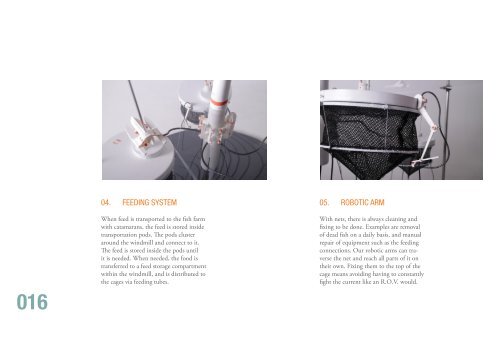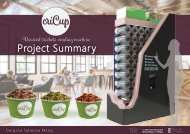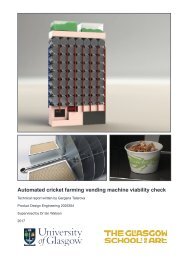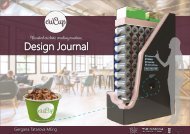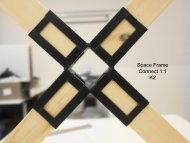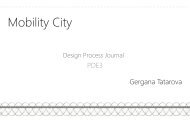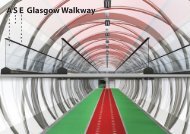D5_GR4_FINAL_DOCUMENTATION_spreads
Create successful ePaper yourself
Turn your PDF publications into a flip-book with our unique Google optimized e-Paper software.
06. CAGE<br />
The cages are submerged to get them<br />
beneath the lize zone, and away from<br />
airborne predators and harsh weather<br />
conditions. An airtight air-bubble with<br />
artificial lighting inside provides a controllable,<br />
simulated water surface. This<br />
supports fish welfare. feeding and creates<br />
a natural habitat for the fish.<br />
016<br />
04. FEEDING SYSTEM<br />
When feed is transported to the fish farm<br />
with catamarans, the feed is stored inside<br />
transportation pods. The pods cluster<br />
around the windmill and connect to it.<br />
The feed is stored inside the pods until<br />
it is needed. When needed, the food is<br />
transferred to a feed storage compartment<br />
within the windmill, and is distributed to<br />
the cages via feeding tubes.<br />
05. ROBOTIC ARM<br />
With nets, there is always cleaning and<br />
fixing to be done. Examples are removal<br />
of dead fish on a daily basis, and manual<br />
repair of equipment such as the feeding<br />
connections. Our robotic arms can traverse<br />
the net and reach all parts of it on<br />
their own. Fixing them to the top of the<br />
cage means avoiding having to constantly<br />
fight the current like an R.O.V. would.<br />
We spent quite some time looking at<br />
different cage solutions and decided not<br />
to focus on the netting or cage operations<br />
themselves, but rather to propose a<br />
solution that opens many opportunities<br />
and serves the system as a whole.<br />
1 million fish per cage<br />
5% fish to 95% water<br />
Diameter: 72 metres. Height: 30 metres<br />
Top of cage: 20 metres below the surface<br />
017


